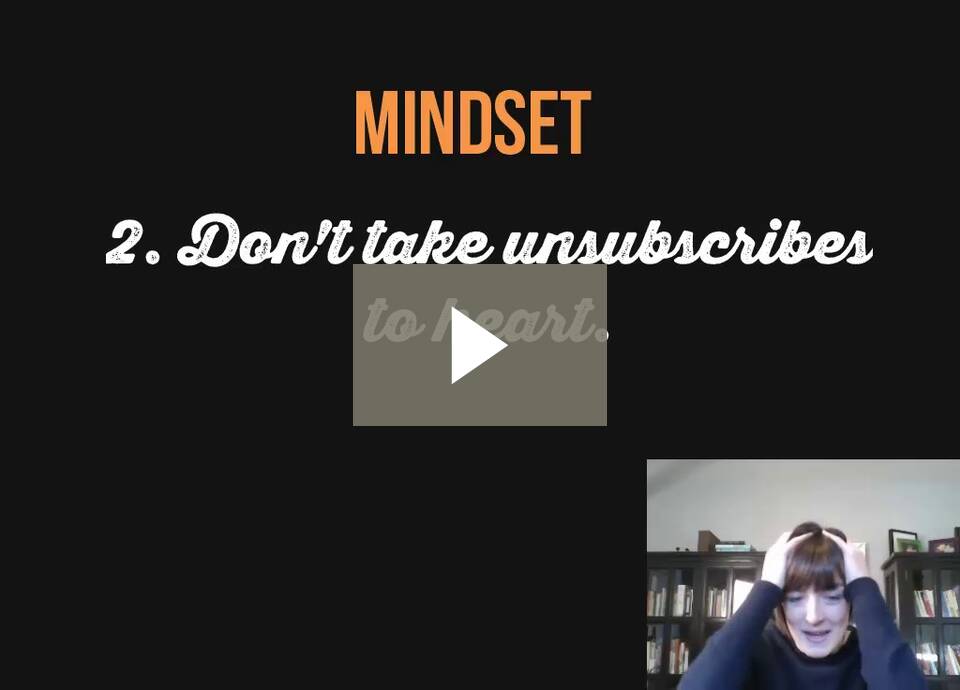How Can Live Videos Help You Get Leads
Use teasers
“To attract potential leads, promote your live video with a catchy title or appealing topic. Then as you cover the topic in the video, structure the presentation so it leads viewers into your marketing and sales funnel and takes advantage of the interaction that live video offers,” wrote Social Examiner.
When you structure a live video, you want viewers to stay until the end when you pitch your product or service. Therefore, make sure you give them an introduction and explain what you plan to discuss, offering them a hook to what they might miss if they don’t watch until the end. That will keep them connected and wanting to hear and see more.
Landing pages
Landing pages are meant for conversion. But that can only happen if the videos on them are able to attract their target, by being catchy and engaging. Video can help you do this by luring people in through humor or captivating storytelling. Videos are 12 times more likely to be watched than text is to be read. By creating an interesting video you will be able to keep the people longer on your landing page and convince them to continue on to the rest of your landing page content.
The best practice for capturing leads when using promotional videos on landing pages is to use a call-to-action (CTA) or auto-redirect. A CTA at the end of your video invites viewers to take the next step and an auto-redirect sends viewers to the rest of your landing page immediately upon completion, thus giving them the opportunity to further engage with your brand.
YouTube Annotations and other forms of pop-out CTAs are great additions to make sure your viewers are engaging with your content. You want your viewers to take action, and including these elements during a video is a great way to engage them in the moment—for example, if you are discussing a particular service or product and that annotation text link pops up right at that moment. Moreover, this is a great way to link people to other content you want them to view.
Offer demos of your products
One-off demo videos represents a great way to answer a question or highlight a specific product feature while engaging with leads in a personalized, helpful way. And more than anything, they are a really effective way of interacting.
Product videos are some of the most commonly produced and most frequently viewed videos. Rather than just capturing the standard information of name, company, email address, and phone number, use these types of videos, instead, as opportunities to learn more about your prospects. as the ultimate goal is to capture information that will help you to better qualify your leads. In order to succeed at that chapter you must make sure your videos contain interactive elements such as survey questions or polls, that will encourage your target to engage more.
Ask your audience to respond through a live chat bar, as this will give you the opportunity to see if they’re interested in the product or service you have to offer. This tactic will help you follow up with the right people after the live video ends and make more sales.
Offer educational, high-value content
People are drown to great content,from which they can learn more. Don’t make your live video just a sales pitch, make sure that at the end of the day the people watching are left with great pieces of information. That will make them come back to you over and over again.
Give discounts
Videos sale better than images, just as images sale better than plain texts. Therefore, don’t forget to offer people discounts if you are promoting a product or a service. This is a great way to attract new consumers, but also to keep the ones you already have. By giving the discounts only to the people watching the live video, it also offers them the feeling of exclusivity we all crave for.
The Virtual Promoter and why use it in your campaigns
Sometimes is hard to keep up with the technology at the level that is evolving, but by doing it you make sure your business stays in front of the pack and continues to gets more and more loyal customers. In this context, the retail industry has become one of the most competitive and dynamic areas of work, with brands literary fighting for the top stops in consumers’ minds.
It’s time for the agencies be even closer to their clients and help them reach their business goal. In retail, virtual mannequins have become an ideal, interactive display to inform customers, visitors and guests. The virtual mannequin can be you, a member of your staff or a hired actor. Virtual Mannequins create a ‘hologram model’ that enables stores and brands to display consistently powerful and engaging sales pitches, promotional and informational messages. Virtual promoter can be used in shopping malls, supermarkets, banks, airports, auto-dealerships, hotels, restaurants and a host of other areas.
efmp (European Field Marketing Partners)’s agencies in the Czech Republic, Germany and Romania are some of the few agencies in the world using this state of the art interactive 83” rear-projection media display platform, called the Virtual Promoter. This platform has been designed to produce a life-size display that interacts by gestures and hi-fi sound feedback.
“The interactive displays are aesthetically pleasing and effortlessly catch the attention of the passing consumers. The engaging nature of the displays makes consumers curious and encourages them to explore the technology; as a result every detail of the product is promoted. Whether it’s product information, special offers, services or long-term customer retention, there is no better way to capture the attention of the customers at the point of sale (POS); and the virtual promoters are always on duty,” wrote efmp on its blog.
Due to the novel way that virtual promoters display information, consumers are receptive to far more information. This is a great advantage for brands operating in a competitive environment. However, the benefits go beyond just engagement but also include the recording of in-depth customer metrics, with smart data giving brands insight into their target audience.
PPM Factum in the Czech Republic is one of only a few agencies in the world to use this progressive technology. They launched their virtual promoter (ViP) at the Retail Summit on 1st February 2016. According to its website, it is a device designed by the company Ameria, Germany, and is based on the motion capture. The Virtual Promoter (ViP) offers to show your advertisements or product range in a completely new and original way. By means of creative and entertaining application formats it is possible to communicate via the ViP much larger amount of information, moreover in a absolutely non-aggressive way, which is perceived very positively by customers.
“The essence of using this technology is to give brands a deeper understanding of how customers experience them in the retail environment, which in turn enhances their business intelligence and allows them to make strategic changes to implement cost savings and an increase in sales. It allows our agencies to translate their activities into data that shapes business decisions. Given the variety of campaigns delivered and the objectives for each, all agencies are able to create and report on bespoke metrics that are tailored to an individual brand’s needs. The ultimate objective is to optimize performance. A variety of platforms and tools are used to deliver campaigns; below we outline some of the outputs and benefits of this technology,” added efmp.
Some of the advantages for the business are:
Increase attractiveness of your business place. Attract attention to your shop.
Call to action. Process promotions & novelties and attract customers to your shop.
Information and navigation function. Offer information on your products including navigation through your business location.
An assistant support. Provide service outside your opening hours or unburden your sales assistants during peak hours.
Entertaining function. Offer your customers a pleasant use of time while waiting, kid´s corner.
CRM innovation.
Quality evaluation of promo event effectiveness based on accurate data.
Attracts attention of passersby by addressing them proactively.
Promo function is accomplished unobtrusively in the background by providing information or via an entertaining application.
“GIMMO Virtual Promoter” (ViP) is a device working on the principle of a projection on a glass coated with special foil. The glass can be placed in space or in a shop window. The device is equipped with the most advanced motion sensor that can recognize and contact passersby. It responds to gestures and sounds; creates an illusion of a real person. Moreover, still according to its website, almost 7 % of passersby stop and watch on average of 40 seconds, 2 % of passersby proactively test the device and spend on average 70 seconds on it. The device keeps customers´ attention much longer than any other type of media. Percentage of expressed interest is significantly higher than in other measurable media (internet).
How to create an online storytelling campaign for an NGO
“Storytelling is how humans communicate with each other, the way that we make sense of complex information, and how we relay our experiences to others. Nonprofit storytelling can motivate people to pay attention and take action. Emotional, appealing stories can build an online audience for your nonprofit,” wrote TheBalance.
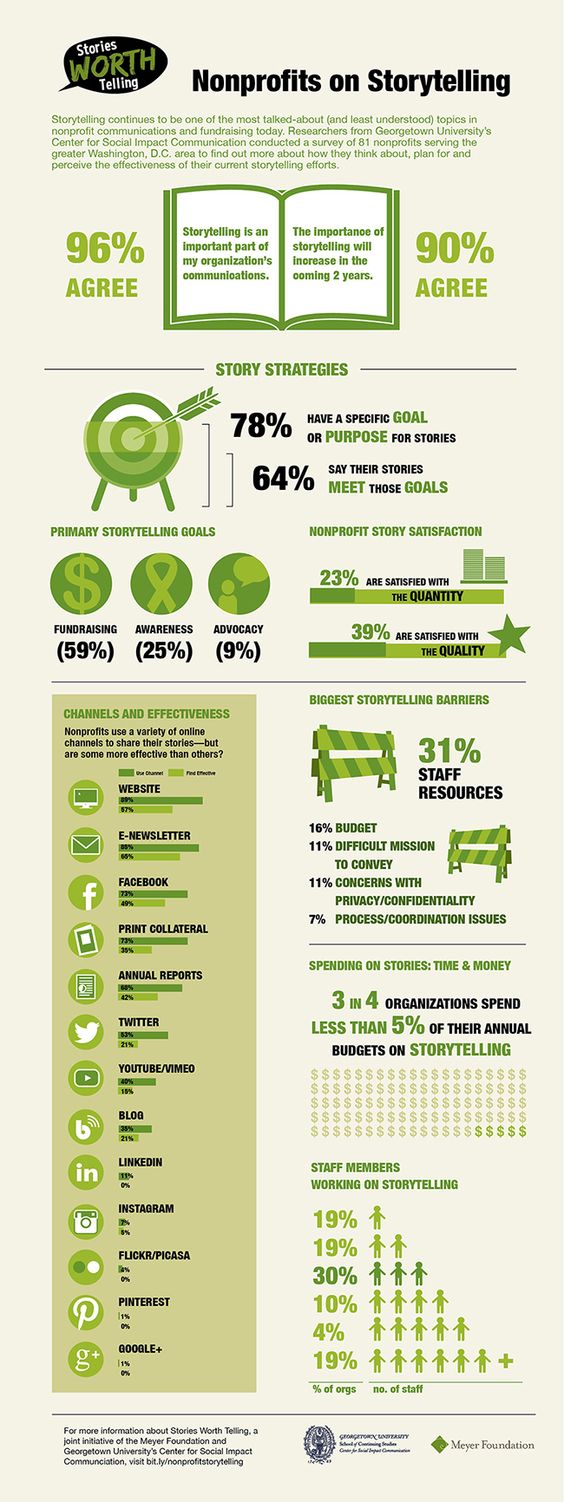
Videos allow you to combine your dynamic story with emotion to create a connection with your audience that words and photos cannot build. Emotion is your main asset to use. Moreover, organizations can convey impact in a way that engages and inspires donors by persistently telling stories.Through storytelling, nonprofit organizations can harness the power of emotion to make a connection with donors that inspires action.
According to thebalance.com, a storytelling campaign has three phases: planning, implementation, and evaluation. In the planning stage, you need to articulate the goal of the storytelling campaign clearly. “Design each campaign for a defined purpose and to accomplish a specific goal. You may need to carry out multiple storytelling campaigns per month to achieve your goal, or perhaps just one per quarter, depending on your resources. Once you define the action that you want people to take, you can determine who is most likely to take that action, and the emotional storytelling hooks to get them to do so.”
The next steps are selecting your audience and making sure that the story is true and it fits the audience’s expectations and realities. There are five main types of stories that nonprofits can collect and develop — value stories, social proof stories, founder stories, resilience/continuous improvement stories, and impact stories. After deciding that you must collect the necessary pieces of information to create the right campaign, choose the right channels to whom to send it and promote it,create it, share it and evaluate it. More details you can find here.
“Because e-mail is a great way to engage supporters who might not regularly visit your website, you can use it to hook supporters into your story and prompt further action, without it feeling like you’re asking for donations at every point of communication. Use e-mail as an opportunity to invite readers to be the hero of your organization’s mission. Layer in visuals: With the average person’s attention span maxing out at 8 seconds, you can’t afford to deliver a novel to people’s inboxes. Instead, think of your story as a short picture book. This email is such a great example because it injects an image after every couple sentences. Break up blocks of text with visuals to keep readers engaged and keep your copy clear, simple and concise,” wrote classy.org.
More ideas and pieces of advice you can find also here.
Facebook Groups for brands and how they work
A ccording to Facebook more than 100 million people are members of what they call “very meaningful” groups.
“These are groups that upon joining, quickly become the most important part of our social network experience and an important part of our physical support structure. For example, many new parents tell us that joining a parenting group after having a child fits this purpose.”
As such, “Facebook sees groups as an opportunity for the platform to boost engagement and interaction, making The Social Network an even more important part of our interactive process. And there’s a growing range of opportunities for brands in this evolution. You need to tread carefully – you can’t just rush in spamming everyone and everything, everywhere you can, hoping for a good result – but there are ways to utilize Facebook’s renewed Groups focus to further your reach and resonance on the world’s biggest social network,” says Andrew Hutchinson for Social Media Today.
Before the social network boom, online communities and forums were THE spaces that allowed people to interact, collaborate, share content, and learn from each other. “Now maybe Facebook, Twitter, Google+, and dozens of other social networks have stolen a big part of the spotlight, but lately, groups, forums, and online communities are once again regaining their power, and with great force. Why? Because brands are finding it harder and harder to gain exposure and reach their fans and followers on platforms like Facebook. Also, because companies are finally realizing that people today more than ever, seek to satisfy the need for a “sense of belonging,” to express, to learn, and to share,” writes Josefina Casas for Postcron.com.
What offer the groups even more after the recent updates?
The possibility for pages to post into groups
In the past, only individual members were able to post in Groups, but now, you can be logged on as a Page and can comment and interact within a group setting as a direct representative of your business. One of the biggest pluses and benefits is that you can now offer advice, assistance and technical support from your official brand account, which lends more weight to your advice, while also serving as a brand building process in itself.
Still, it’s important to know not to tackle it in the wrong way by becoming to insistent or aggressive. Your audience needs to see you as a consultant and advice bringer, not a psychopath. Offering assistance where possible can be a great way to boost your business.
Having analytics on your side
The recently launched Group Analytics feature, provides a range of key data points to help group admins get a better understanding of their audience, and how to maximize response. Research are data are proving to be as important as ever nowadays, helping the brands remain relevant and offering their target what they need and want. The pieces of relevant information received on members and engagement, and also on the days and times when people are most active within your group, are enabling you to better plan and schedule your content to maximize response. There’s also demographic breakdowns, which can not only help you get a better understanding of your core, engaged target audience within your group, but can also improve your wider market research efforts.
More you can also read here.
What you need to know about the 70 percent rule
According to investopedia.com, the rule of 70 is a way to estimate the number of years it takes for a certain variable to double. “To estimate the number of years for a variable to double, take the number 70 and divide it by the growth rate of the variable. This rule is commonly used with an annual compound interest rate to quickly determine how long it takes to double your money,” writes the website.
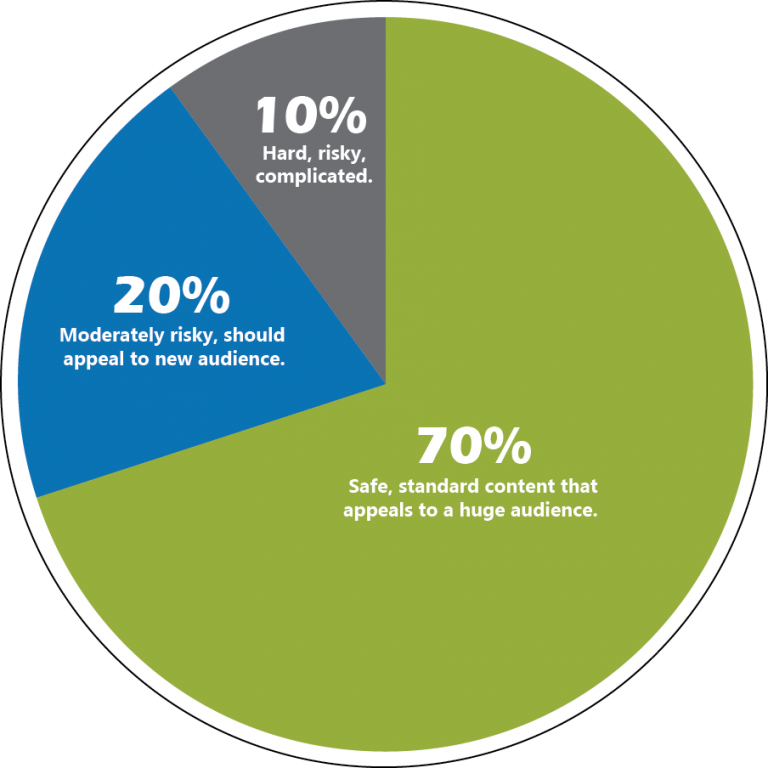
Also, the rule is very popular in the real estate world, where the 70% of ARV (after repair value) “rule” is a formula commonly referred to by real estate investors, and used as a barometer when purchasing distressed real estate for a profit. The formula will calculate the maximum you can pay for a given property once you input two key factors, namely the ARV and estimated repair costs.
But, “it is critical to realize the 70% “rule” is not a one size fits all model that can be applied universally to all situations, markets or exit strategies. As a result investors who try to uniformly apply this 70% rule will consequently get less offers accepted. If you treat it with such regard, you will miss out on deals because your offers will be less competitive. Being in tune with your market is key and allows you to make more competitive, fair offers that have a higher chance of being accepted,” says biggerpockets.com.

source: SlidesShare
At the same time, though differently, the rule is also used by CEOs while delegating their power. When instead of money we are talking about performance,productivity, engagement and life-work balance.
According to inc.com, this 70 percent performance standard allows the CEO to aggressively move tasks to team members and have them perform the tasks at an acceptable level. “One important point is that if you delegate a task fully, you shouldn’t try to coach up the receiver to get back that 30 percent difference. When it comes to effective delegation, not only does communication need to be clear, concise, and consistent, but also you need to make sure each team member has access to the same information. Trust is one of the most important factors when it comes to delegation, and it goes both ways. You need to trust that your team members will complete the work they are responsible for, and your team members need to trust that you are giving them all the information they need to do the work. You will be available to back them up when necessary, writes Jim Schleckser for inc.com.
As techtarget.com points out, , according to the 70 percent rule, employees are most productive not when they are working as hard as they can from day to day but when they work, most of the time, at a less intense pace. “In this way, when demands are increased temporarily, they have some capacity to respond, whereas the employee working full-out is incapable of producing any more. (…) Best practices for incorporating the 70 percent rule include taking vacations and mini-breaks, leaving some of the day unscheduled and learning to refuse unreasonable work demands,” concludes TechTarget.
The greatest mistakes a brand can make online
Waiting too long to launch a product / service.
Like in a relationship, so it happens in business: the perfect timing is essential. In the desire to be sure everything is perfect, most entrepreneurs or business owners wait too long, therefore missing the right opportunity to launch the business, the service or the product. It’s important not to forget to trust your guts and just go for it.
“Some people are waiting for some magic audience size “1,000 subscribers” or maybe “10,000 visitors” or whatever your number might be. Some people just can’t find the time to blog or podcast or make videos AND to build a product at the same time. It’s tough. Some people simply talk themselves out of creating a product because they’re afraid no one will buy it. They don’t want to fail after putting in so much time creating content. Whatever the reason, this is a fatal trap. If you’re building a business, you need to address the biggest risk head-on. The biggest risk you’ll face as a business is in creating something no one will pay for,” wrote Corbett Barr for fizzle.co.
Not checking and double checking before posting
Still, one must be very careful before sending the message into the world. Each post on social media should be treated with a lot of attention and care, otherwise it may do more harm than good. Often we see big grammar mistakes, pictures that are not doing any favor to the brand, wrong comments or even worse. Even they are taken down afterwards, it might be too late.
Fabricating pieces of news or information
For each brand the trust must be earned. People don’t like to be lied to or be mislead, therefore you must make sure that every piece of information you share with your target is 100 % true. Today, every piece of content is very easily checked by anyone. If you do make a mistake, make sure to apologize for it. Everybody can make mistakes, the important thing is to own it and act accordingly. Your target will understand and respect you. Don’t hide and act like nothing happened or erase the post.
The lack of patience.
Brands are not built overnight. Building an online brand takes patience. It’s something that’s built brick by brick with every tweet, every blog post, and every podcast episode. It’s built with every client one step at a time. One of the biggest mistakes business owners do is thinking that a brand can be build in only 2-3 months online and complaining after this short period of time that they aren’t seeing any traction. In reality, building a brand takes years of hard work, experience, people and investment, so make sure you think of all those aspects prior to starting on this road.
Not being consistent.
You can’t build an online brand without consistently putting a message out there. A social media following is gained in time, after a lot of work on strategy and implementation, an e-commerce business takes months of work prior to launch and after launch, until the first signs of success occur. Time and dedicated teams that are working towards the same purpose, following a strategy based on true insights. Constant content must be sent on regular basis to all the social media platforms of your brand, PR, marketing & sales efforts are also needed. Constant, insightful, creative and powerful messages, perfectly targeted to your interest group or groups. “If you’re having difficulty being consistent with your content creation as you build an online brand, try automating your social media needs and creating an editorial calendar for your site. The more organized you can be the better,” said Amanda Abella, writer and author of “Make Money Your Honey”.
Not putting customer experience first
Customer experience is one of the most important factors in your business, especially today in the world on the Internet and social media frenzy. Since your social interactions are public for everyone to see, your reactivity defines your brand and shows customers how much you care. The more you interact with them and show them your interest in them, the better. Don’t be shy on giving special discounts or mentions on your social media accounts to the people that are loyal to you and choose your brand on a regular basis.
Not really listening to their consumers
And believing that you and your team always know better. It;s important not to forget that from the unhappy consumers or the ones that choose not to buy your product / service in favor of another one, you can learn the most. They are the unbiased ones and their opinion should be treasured. Don’t just pay lip service to your customers. You don’t have all the answers, they do. There’s a reason why “the customer is always right,” because without customers you don’t have a business.
Focusing mostly on acquisition
It takes a lot more effort to attract a new customer than to keep an existing one, so you may want to keep your customers happy. Offer help, give away freebies, or conduct regular surveys to make sure their needs are met.
Here are some of the biggest mistakes in social media, according to Forbes.
12 tips on making the customers buy more in online
The e-commerce industry is probably one of the most competitive at this moment, globally. Therefore, having a successful online shop is not an easy task at all, let alone always growing your business and your customers’ base. There are, although, some steps that, if followed, can really help you achieve your goal.
- Context MattersYour call to action has to fit in with the rest of the copy you have on the page. In this case, put a shopping-cart-related call to action on a page that talks up the product you’ve created or in an article talking about how your product solves a particular problem. It would not go well in an opinion piece about news within your niche.
- Keep it Simple
Your consumer need to find the right information fast. Don’t overcrowd the message by having a heavy environment or many information popping out. It’s important to make the consumer journey as fast and easy as possible. Nothing forced, just flowing. Guide him without letting him feel he is guided. The body of your copy is the place to talk up your products or services. The call to action is what convinces consumers to start shopping.
- Product reviews
Sometimes the best advocate for your online shop and product are your customers. Your product descriptions – something we’ll cover late – can only do so much to convince folks to part with their money. Allowing your customers to review products they’ve bought lets them express how they felt about the overall experience and the product itself. Plus it’s the perfect way to get your products validated by a third party. According to Reevoo, quoted by Paymill.com, “reviews produce an average 18% increase in sales, and having 50 or more reviews on a product can increase its conversion by 4.6%”, while MarketingSherpa considers that 58% of consumers prefer sites that offer reviews.
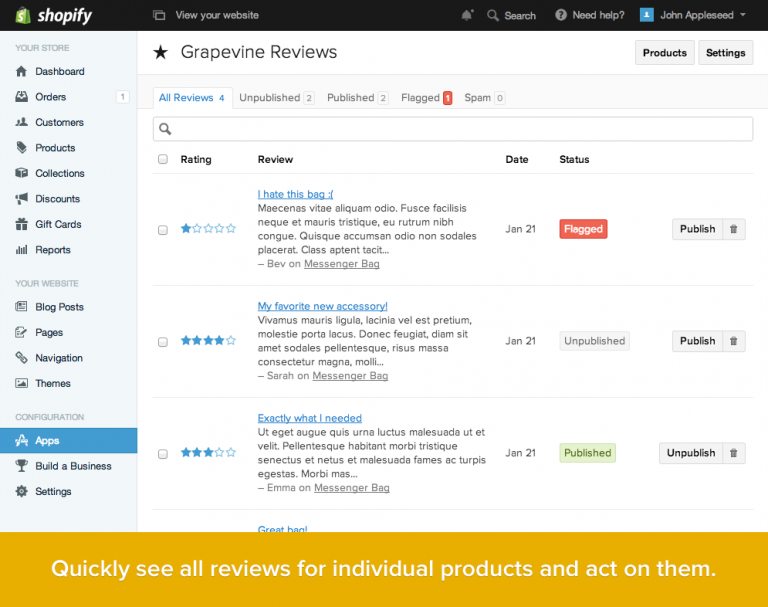
- Placement Matters
Most of the time, a call to action works best when placed at the end of your copy or content. If your particular business makes use of the long-form sales page, putting the call to action higher up is a good idea. You can highlight the benefits of your products and encourage people to buy.
- Make sure you use quality images
Since the technology has evolved so far and one can take a great quality picture, at a high resolution, even with the smartphone there are no more excuses for not using the best pictures possible for your products. You can not only use images to highlight your product’s qualities, but also show it in use to help visitors visualize how the product can be used everyday.

- Great product descriptions
Making it easy for the customers to find the right information and teaching them about the product they are interested in. The writing should be focused on you target and its needs, therefore the tone of voice should be adapted to that. It’s important to focus on the product’s benefits and to keep the language simple, avoiding as much as possible the jargon and write short sentences to help the readability.
- Build Excitement
You need to build up the product or line of products in customers’ minds before asking them to buy. This way, there won’t be any doubt about if they want to take the action you’re calling on them to take. Talk about or show how beneficial what you’re selling can be in the buyer’s life.
- Be Active, Not Passive
“It would be nice if you bought my stuff” is not the same as “Click here to start shopping.” Passive implies that you aren’t sure if you want them to do the thing you’re asking them to do. Active voice removes all doubt about your expectations, shows confidence in your products and brands, which it will bring confidence for the customers as well.
9. Try and have pages as clickable as possible
It helps if you make your call to action an actual clickable link — preferably to your shopping cart (which can say something like “Cart empty! Start shopping here”). This saves the viewer the time of searching for the thing that helps them do what you want them to do. As said earlier, making things easier and comfortable for the shopper only helps your business and your sales.
- Show related products that would look great next to the product they already have in the cart or that would fit perfectly. For example for a photo camera a memory card or different lenses. People tend to buy more this way. It’s an opportunity to increase revenue because it shows items visitors may not have otherwise been looking for and it takes them to pages they may haven’t been interested in entering.
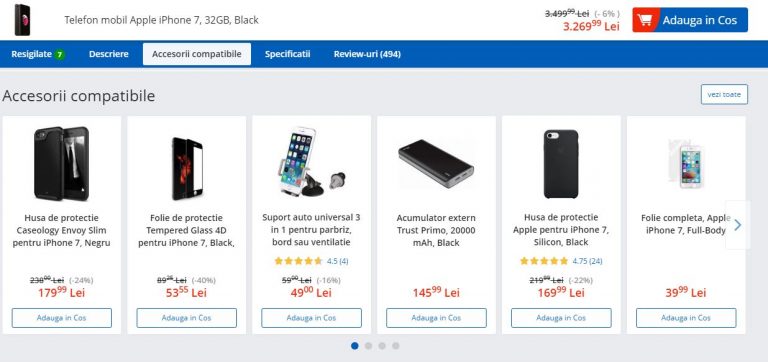
- Easy and safe payment
One of the biggest concerns that people address when it comes to online shopping is the safety of their payment. Make sure you have a trustful provider and that you make the process as easy as possible. Offer them different payment methods, don’t force them to sign up for different offers or newsletters, don’t ask them a bunch of unnecessary information, make sure the checkout page matches the rest of the store. Those would be just some easy, but really important pieces of advice.
- Test, Change, Test Again
Having an online store means constant work of improvement. Even if you have constant growth and awards won, there is always something you can improve. Therefore, test and keep on always testing your website. After all, the final goal is to always keep the costumer happy and wanting to come back and bring more friends along.
How To Write An Email That Actually Sells
When writing a business email the line between too little and too much may be very small, therefore is important to pay attention to some of the advices that the specialists offered during the years into how to write a successful email.
Being yourself in emails can bring you more long-term response than any other email tip, tactic or “technique” combined. Let your unique personality shine through in every word. Showing your partners the real you, will take you far. The business people are fed up of receiving robotic- mechanical email, full of the same key phrases that actually don’t say a thing. Introduce yourself, and your company, right away. Existing customers will greet you like an old friend, while potential shoppers won’t be forced to wonder if you are a shady scam artist.
Target your message to the right audience. Never forget what you are selling and to whom you are selling it. Remember that even the best crafted pitch is worthless if it’s delivered to someone who doesn’t want it.
Get to the point. According to Jupiter Communications research, only 15 percent of web users read all email messages in their entirety. More than half (51.2 percent) read the first few sentences and then decide whether or not to continue. Forcing your customer to wade through paragraphs of superfluous information is the quickest route to the delete key and to the death of a sale.
Be clear. Make sure that the information is presented in a clear matter. Use paragraphs, bold words, to highlight the most important part of the content and make sure it stands out and is not forgotten. Moreover, avoid the temptation to be too sophisticated in your design. Many systems still won’t support fancy formatting. Plus, most of it gets lost on the trip through the network anyway. Keep it easy on the eye.

Be an editor. Your customer needs to know he is buying from the best. Proofread. Break up run-on sentences. Use simple language. Catchy phrases don’t make up for sloppy punctuation and typos. And if you can’t write, hire someone who can.
Try a joke. Nothing works better than a good sense of humor, use at the right time and with the right amount of spice. Not an easy to do task at all, but one that proved to be quite efficient in time.
Tell stories. Stories are a great way to sell in emails, no matter the brand of the product or the service you are trying to pitch. If you succeeded in making the other side drawn into your story, then for sure you have a winning email. The reason is quite simple: people like to be emerged easily into the content, to be charmed, not to have the impression even from the beginning that you want to sell them something or the fact that this is your plan all along. Let the person reading the email be entertained, carried through the layers of the email and the information you are providing him. It will be much easy to be processed and understood.
And, in many cases, it’s the most persuasive way to get someone to do what you want. Whether it’s persuading someone to buy your product or persuading a child to be careful of talking to strangers — stories inspire and motivate people to take action.
Personalize it. Make sure you know to whom you are writing and address it accordingly, by name and position. Few things are more annoying that receiving a “bulk” email, addressed wrongly. Knowing a little about the person you are writing to and making sure you are saying it gets you a long way on the selling process.
The guys at hubspot.com give you even more ideas here.
The Job of the Future

The future. The perfect job. All of these terms mean different things to different people. What makes us happy may not make somebody else. Forseeing into the future and finding predictable trends is a job that requires lots of research and inspiration, but it will never be 100 percent accurate.
If for some people the perfect job might be travelling and blogging about it, for others may mean sitting in front of a desktop and writing algorithms. If for some the job of the future may be totally related to the new technologies, for others may represent going back to their roots and the nature, following the naturist trend.
For example in Singapore, according to vulcanpost.com, there are three mismatches in today’s society that negatively impacts the employability and job search process for Singaporeans: mismatch of skills, of jobs and of expectations. Due to the lack of publicly available information, job seekers sometimes have a skewed impression of what jobs are up for grabs, and where they can be found. This in turn results in a surplus of jobs in certain industries while other sectors, such as security, suffer from a crippling lack of manpower. According to the Acting Minister of Education, Ong Ye Kung, there will be a job boom in the engineering and tech sectors of more than 30, 000 positions. And that, while at the same time, there are countries where the demand for these people is huge and rising.
Moreover, we have to take in account the fact that some jobs and titles didn’t exist some years ago, leaving the possibility for the same thing to happen in the future. In other words said, nobody knows what new jobs and positions will appear in 20-30 years’ time from now.
What is important to realize is that any job you would forsee for yourself, in order to make sure you do have a future, you must poses a set of skills that will help you navigate through the tough climate and find the right spot for you, even this one may change during the years. In our opinion, those qualities would require someone to:
- Be flexible
- Stay curious
- Be creative
- Be a different type of leader
- Have great communication skills
- Try to expand your boundaries
- Experiment as much as possible
- Know Himself / Herself
- Don’t be afraid to ask
- Build networks
- Keep the ego in check
- Be present and active
- Keep an eye out for everything new


